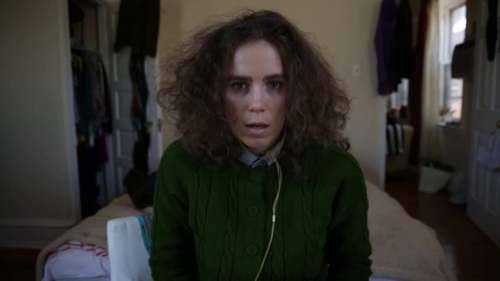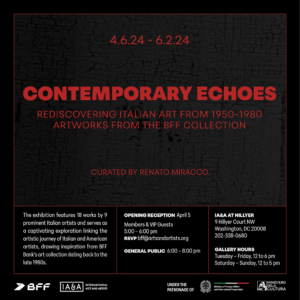
CONCEPTUAL CHARACTER: Q&A WITH SASCHA HUGHES-CALEY
As a multimedia artist, with the No Joke installation at Hillyer featuring performance documentation, sculpture, and video work, how do you ensure unity in your pieces?
I trust that formal and conceptual unity will be there. It is important for me to see how each piece works in conversation with the other. For No Joke, I had to privilege the unity of each individual work and trust that a larger conceptual unity would be present in its installation.
The show really centers around two fictional characters (performance documentation and various monuments to each) as well as a video installation.
What inspired No Joke’s focus on cultural miscommunication as a critique of the American wellness market? What thoughts do you hope to inspire in viewers?
During two visits to India while I was in graduate school (first for a friend’s wedding and second on a research grant), I turned a pretty critical eye on various approaches to self-help and the American wellness market.
Since becoming a yoga and meditation teacher in 2010, I have been trying to put my finger on something in my yoga community (Los Angeles at the time, then Washington, DC and Philadelphia) that felt extreme. I started thinking about our attempts to make an experience endless or transcendental and a certain myth of progress. I wanted to bring the human pieces together.
I have utmost respect for complementary and alternative healing modalities and self-guided improvement (if it makes you feel better and doesn’t hurt anyone or the environment, go for it) but I also think it is important to engage with these themes boldly and head-on.
At the forefront of this investigation is a conceptual character that I devised and perform named Shanti Paz. Shanti Paz is my crack at examining a sense of individualism and triumphalism that is uniquely American. When we culturally lose track of our own religions, political systems, and so on, we begin reaching to other systems for guidance. For example, many Americans, like Shanti Paz herself, have taken over or appropriated elements of a traditionally Indian spiritual practice and are serving as modern-day “gurus” or life coaches in hopes of helping us arrive at enlightenment. However, her perspective is binary, and therefore, blind in a way. While embodying a self-less meditator, Shanti is entitled and unwilling to ask for permission. The tension within one person trying to embrace spiritual completeness renders her completely unqualified.
In a similar vein, there is a disconnect between what we imagine to be the yogic approach to shedding one’s ego and the American focus on building it up. This is exceptionally complicated as a female studying these traditions, in that the contemporary voices telling us to to “lean in” and build up ego are louder than ever. In most of the performances thus far, Shanti Paz is in some sort of crisis. She becomes less of a model of spiritual enlightenment, and more a model of general unawareness.
How has your experience as an actor influenced your artwork?
I think my experience as an actor makes me hyperaware of my body, breath, and voice – like any actor, I try to identify my given circumstances and find “neutral” before I take on a new role or position in my work.
Improvisation is important to me – few studio moves are ever written in capital letters, and I am very interested in character as a vehicle for the self.
I am also fascinated by how language is written and performed. We think of scripts a lot when imagining the theater, but what about how pop culture writes these narratives for us every day? For example, look at our ceremonial languages (or lack thereof) around death and dying. I want to know: if I re-enact something like an ending, or an apology, can I make it fuller? More truthful?
Are there any artists, historical or current, that have influenced your work?
This list changes and grows every day but voices that I always come back to: Andrea Fraser, Mary Reid Kelley, Tino Sehgal, Rineke Dijkstra, Alex Bagg, Shannon Plumb, Nancy Davenport, Eve Sussman, early Sam Taylor-Wood, Bruce Nauman, Tammy Ben-Tor, Chantal Akerman, Massimo Bartolini, Jackie Tileston, Stan Douglas, Matt Freedman, and Marc Blumthal.
As adjunct faculty at two universities in Philadelphia, what is the lesson that you most want your art students to learn?
That it is okay to make fail – the most important thing is to take the risk. Command+Z exists for a reason. Paint can dry and be reapplied later. This fear of breaking something or messing up happens a lot intro-level classes, especially video. The goal is to identify what went wrong, how to fix it, and move forward with a strategy to make certain it doesn’t happen again. After that…the freedom!

